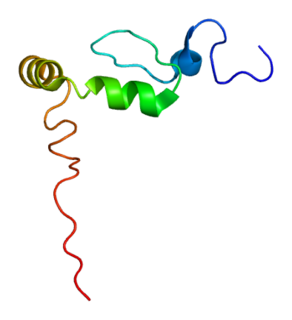
Zinc finger transcription factor Trps1 is a protein that in humans is encoded by the TRPS1 gene.

Zinc finger protein 3 is a protein that in humans is encoded by the ZNF3 gene.

Zinc finger protein 593 is a protein that in humans is encoded by the ZNF593 gene.

Zinc finger and BTB domain-containing protein 20 is a protein that in humans is encoded by the ZBTB20 gene.

Zinc finger and BTB domain containing 11 is a protein that in humans is encoded by the ZBTB11 gene.

Zinc finger and BTB domain containing 1 is a protein in humans that is encoded by the ZBTB1 gene.

Zinc finger, DHHC-type containing 14 is a protein that in humans is encoded by the ZDHHC14 gene.

Zinc finger CCCH-type containing 10 is a protein that in humans is encoded by the ZC3H10 gene.

Zinc finger protein 394 is a protein that in humans is encoded by the ZNF394 gene.

Zinc finger C2HC-type containing 1B is a protein that in humans is encoded by the ZC2HC1B gene.

Zinc finger C3H1-type containing is a protein that in humans is encoded by the ZFC3H1 gene.

Zinc finger SWIM-type containing 3 is a protein that in humans is encoded by the ZSWIM3 gene.

Zinc finger MYM-type containing 1 is a protein that in humans is encoded by the ZMYM1 gene.

Zinc finger FYVE-type containing 28 is a protein that in humans is encoded by the ZFYVE28 gene.

Zinc finger protein 142 is a protein that in humans is encoded by the ZNF142 gene.

Ring finger protein 19B is a protein that in humans is encoded by the RNF19B gene.

Zinc finger protein 2 is a protein that in humans is encoded by the ZNF2 gene.

Zinc finger NFX1-type containing 1 is a protein that in humans is encoded by the ZNFX1 gene.

Tripartite motif containing 38 is a protein that in humans is encoded by the TRIM38 gene.

Zinc finger RANBP2-type containing 1 is a protein that in humans is encoded by the ZRANB1 gene.


















